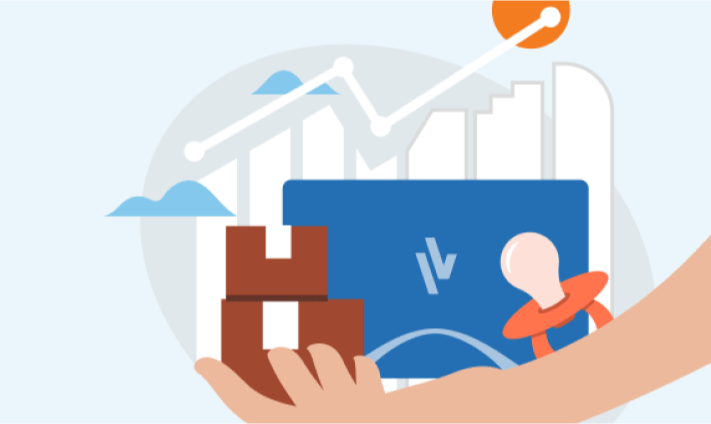When it comes to investing, there’s something that everyone needs to know. Something that investors repeat during sleepless nights, and something that probably informed your decision to invest in the first place:
Over the long term, the market goes up.
Of course, that’s easy to lose sight of when markets tumble 15 or 20 per cent, like they did at the start of the COVID-19 pandemic. Especially since reaching these lows took a far shorter time than it did to reach any of the latest record highs.
Still, there is good news. Periods of uncertainty have happened before. History consistently shows us that markets recover and trend upwards, presenting a unique opportunity to invest when prices are low.
The four stages of a market cycle
An investing reality that we often forget is that market fluctuations, also known as “volatility,” can exist through every phase of the market cycle. We simply notice it more when markets go down, because losing money generates far more emotion than seeing incremental gains, which is what we expect an investment to do over time.
While market fluctuations can be unsettling, they’re inevitable, and no one can predict when they will happen. Understanding how market cycles work can help you maintain perspective during times of uncertainty so you can focus on your investment plan geared towards your personal goals.
The four stages of a market cycle are:
- Accumulation is when investors – thinking that the worst is over, that markets have “bottomed out” and that prospects for the economy look good – begin buying again. Essentially, prices are low and value is high.
- Markup is the second wave of buying, when the market is more stable. This stage is easier to identify, with media and news outlets highlighting the upward trend and investors putting their money back into the markets.
- Distribution is the phase at which prices are at their peak. The “Bull market” that was pushing prices higher slowly begins to level off, and a relatively equal amount of buying and selling is seen across the markets.
- Downtrend, sometimes called the “markdown,” is the final stage – triggered by widespread selling, as investors try to lock in profits and avoid major financial losses. A prolonged downtrend phase becomes a “Bear market.”
The difference between Bulls and Bears
While these familiar terms are used universally to describe which way the market is trending, there are different definitions of what marks the beginning and the end of each trend – often, a rise or fall of 20 per cent or more in stock prices. In reality, however, it’s any prolonged period of upward (Bull) or downward (Bear) movement within the markets.
The best way forward
There are countless factors influencing market cycles. Some are easier to see coming than others. Getting through times of uncertainty isn’t about knowing which stage of the market cycle we’re in. Typically, we don’t know that until we can look back and clearly identify the beginning and end of each preceding stage.
The advantage comes with understanding how market cycles work. From there, it’s knowing (and trusting) that having an investment plan geared towards your individual goals and objectives – and sticking to it – is the best defense against inevitable market downturns.
Our financial representatives* are here to help you navigate through each market cycle so you can worry less about your investments. For more information, and for resources and financial-market news, visit Market View.
* *In the province of Quebec, the authorized representatives are Financial Security Advisors who have been duly certified by the Autorité des marchés financiers. Segregated Funds and annuities are administered by Co-operators Life Insurance Company. This article is provided as a general source of information for a specific point in time and should not be considered solicitation to buy or sell any investment. Nothing contained in this article constitutes investment, legal, tax or other advice. Co-operators Life Insurance Company is committed to protecting the privacy, confidentiality, accuracy and security of the personal information that we collect, use, retain and disclose in the course of conducting our business. Please refer to our privacy policy for more information. The Co-operators® is a registered trademark of The Co-operators Group Limited..




 Home
Home
 Auto
Auto
 Life
Life
 Recreation
Recreation

